Sensor Sweep: Red Nails, Non D&D RPG, Louis L’Amour, Private American
Monday , 20, February 2023 Sensor Sweep 2 CommentsRobert E. Howard (M.C. Tuggle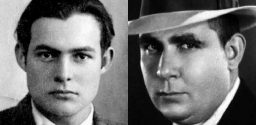 ): Ernest Hemingway and Robert E. Howard had a lot in common. Both were passionate outdoorsmen who relished food and drink and brawling. Though identified with different genres, both infused their fiction with athletic, vivid prose that still stirs the imaginations of appreciative readers. They have inspired countless writers, and decades after their deaths, their works are still in print.
): Ernest Hemingway and Robert E. Howard had a lot in common. Both were passionate outdoorsmen who relished food and drink and brawling. Though identified with different genres, both infused their fiction with athletic, vivid prose that still stirs the imaginations of appreciative readers. They have inspired countless writers, and decades after their deaths, their works are still in print.
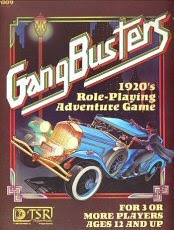 RPG (Grognardia): In a comment to a recent post, I was asked to put together a Top 10 list of my favorite non-D&D RPGs. I thought that was a good idea and today’s post is the first half of that list. In putting the list together, I spent some time reflecting on which games I both liked and had played extensively over the course of my time in the hobby. Most of the results were obvious, but a handful surprised me.
RPG (Grognardia): In a comment to a recent post, I was asked to put together a Top 10 list of my favorite non-D&D RPGs. I thought that was a good idea and today’s post is the first half of that list. In putting the list together, I spent some time reflecting on which games I both liked and had played extensively over the course of my time in the hobby. Most of the results were obvious, but a handful surprised me.
RPG (Grognardia): 5. Star Trek the Role Playing Game Star Trek is my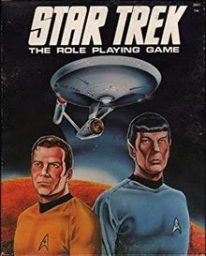 original fandom. I started watching the Original Series in reruns on a local TV channel growing up and instantly fell in love with it. As a kid, I read everything about or related to the show that I could and one of my proudest possessions was a gold Starfleet uniform shirt that I probably wore far too often.
original fandom. I started watching the Original Series in reruns on a local TV channel growing up and instantly fell in love with it. As a kid, I read everything about or related to the show that I could and one of my proudest possessions was a gold Starfleet uniform shirt that I probably wore far too often.
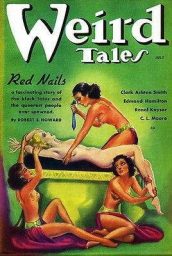 Robert E. Howard (Paperback Warrior): Robert E. Howard’s last sole contribution to his Conan the Cimmerian character was the novella “Red Nails”. It was published posthumously in Weird Tales over the course of July, August/September, and October 1936, mere weeks from Howard’s suicide in June. The story was reprinted in The Sword of Conan (Gnome Press, 1952), Conan the Warrior (Lancer, 1967), and numerous times through Del Rey. “Red Nails” was adapted to comics in Savage Tales issues #2-3, which was reprinted in Conan Saga #9.
Robert E. Howard (Paperback Warrior): Robert E. Howard’s last sole contribution to his Conan the Cimmerian character was the novella “Red Nails”. It was published posthumously in Weird Tales over the course of July, August/September, and October 1936, mere weeks from Howard’s suicide in June. The story was reprinted in The Sword of Conan (Gnome Press, 1952), Conan the Warrior (Lancer, 1967), and numerous times through Del Rey. “Red Nails” was adapted to comics in Savage Tales issues #2-3, which was reprinted in Conan Saga #9.
Fiction (Dark Worlds Quarterly): Last year I wrote about “Snake Gods and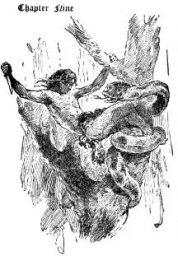 Were-Serpents” with stories like Frank Belknap Long’s “The Were-Snake” and A. Merritt’s “The Snake Mother”. Turns out there are a bunch of serpentine ladies and gigantic slitherers out there I missed. Here are fifteen more great tales of Science Fiction and Horror offering green beauties and giant snakes. (Think of it as Tinder for Monsters.) You’ll want to swipe right and read these great stories.
Were-Serpents” with stories like Frank Belknap Long’s “The Were-Snake” and A. Merritt’s “The Snake Mother”. Turns out there are a bunch of serpentine ladies and gigantic slitherers out there I missed. Here are fifteen more great tales of Science Fiction and Horror offering green beauties and giant snakes. (Think of it as Tinder for Monsters.) You’ll want to swipe right and read these great stories.
Small Press (Silver Key): When I first got into this “thing” –writing about sword-and-sorcery and heroic fantasy, on the internet, and launching The Silver Key blog, more than 15 years ago—I had no idea what I was doing, or why. One of the first people to take notice of this blog on any scale was the late, lamented Cimmerian website, and the editor of its accompanying print journal, Leo Grin.
Westerns (Comics Old Time Radio): Louis L’Amour’s 1957 novel Last Stand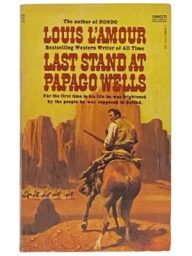 at Papago Wells is a favorite of mine, since I’m a sucker for “last stand” stories. Wandering cowboy Logan Cates takes refuge at the titular water hole and soon finds himself in charge of several other groups of men and women trying to escape Apache warriors. The group finds themselves besieged. Toss a shipment of gold into the midst of this and Logan finds that potential conflict among the whites can be as dangerous as the Apaches.
at Papago Wells is a favorite of mine, since I’m a sucker for “last stand” stories. Wandering cowboy Logan Cates takes refuge at the titular water hole and soon finds himself in charge of several other groups of men and women trying to escape Apache warriors. The group finds themselves besieged. Toss a shipment of gold into the midst of this and Logan finds that potential conflict among the whites can be as dangerous as the Apaches.
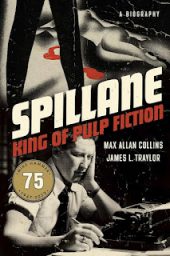 Biography (Chimney Sweep Reader): Mickey Spillane was a complicated man. Known by many as the creator of the iconic and influential character Mike Hammer, he is known by others primarily for a lengthy series of Miller Lite beer commercials. He earned a reputation as an edgy, hard-living, man’s man and yet was known to friends and family as kind, considerate, and willing to give a stranger the shirt off his back. His sense of humor was as evident as his legendary hard-punching, revenge-oriented, justice-delivering hero Mike Hammer.
Biography (Chimney Sweep Reader): Mickey Spillane was a complicated man. Known by many as the creator of the iconic and influential character Mike Hammer, he is known by others primarily for a lengthy series of Miller Lite beer commercials. He earned a reputation as an edgy, hard-living, man’s man and yet was known to friends and family as kind, considerate, and willing to give a stranger the shirt off his back. His sense of humor was as evident as his legendary hard-punching, revenge-oriented, justice-delivering hero Mike Hammer.
Obits (Don Herron): Upon news of her passing today at the age of 82, Autograph Hound Brian Leno pulled his signed Raquel Welch print from his stacks and stacks of autos.
Autograph Hound Brian Leno pulled his signed Raquel Welch print from his stacks and stacks of autos.
Events (Howard Days): With 10 weeks to go, we’re starting to firm up the Howard Days schedule. We hope you’re making plans to join us April 28-29 at the Robert E. Howard Museum in Cross Plains, Texas, for The Best Two Days in Howard Fandom!
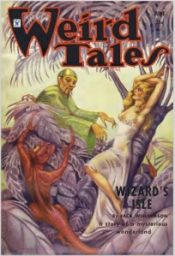 Robert E. Howard (Sprague de Camp Fan): “The Haunter of the Ring” was first published in Weird Tales, June 1934. It was later reprinted in Startling Mystery Stories, Winter 1968/1969. The first paperback appearance was in Black Canaan, Berkley Books, 1978. It has been reprinted several times since then.
Robert E. Howard (Sprague de Camp Fan): “The Haunter of the Ring” was first published in Weird Tales, June 1934. It was later reprinted in Startling Mystery Stories, Winter 1968/1969. The first paperback appearance was in Black Canaan, Berkley Books, 1978. It has been reprinted several times since then.
Firearms (Outdoor Life): If you want a pistol that  can take down a mountain lion but is also easier to carry than a .357 hand cannon for self-defense, the 10mm is the perfect option. Now, this handgun will likely never be an everyday carry gun in an urban setting (it’s not exactly a dainty pistol). But when you’re headed into the backcountry (or live there), the 10mm is ideal for a variety of hunting pursuits and to defend yourself from both animal and human predators.
can take down a mountain lion but is also easier to carry than a .357 hand cannon for self-defense, the 10mm is the perfect option. Now, this handgun will likely never be an everyday carry gun in an urban setting (it’s not exactly a dainty pistol). But when you’re headed into the backcountry (or live there), the 10mm is ideal for a variety of hunting pursuits and to defend yourself from both animal and human predators.
Comic Books (Bounding Into Comics): In November, Mike Baron and his team of artists launched a crowdfunding campaign for Private American, a graphic novel about a vigilante taking the fight to America’s open border. Soon after, far-left activists tried canceling the book. They failed and Private American is moving forward. Now, Baron is laying the groundwork to bring a lawsuit against the involved parties. He provided Bounding into Comics with the latest on the story.
team of artists launched a crowdfunding campaign for Private American, a graphic novel about a vigilante taking the fight to America’s open border. Soon after, far-left activists tried canceling the book. They failed and Private American is moving forward. Now, Baron is laying the groundwork to bring a lawsuit against the involved parties. He provided Bounding into Comics with the latest on the story.
D&D (Wertzone): It’s been a bruising few weeks for Wizards of the Coast and parent company Hasbro, whose plans to monetise the never-more-popular Dungeons & Dragons brand by removing the Open Game Licence 1.0 ran into fierce opposition from fans and fellow businesses alike.
Tolkien (Tolkien Untangled): Top Ten Middle-earth Misconceptions
Forthcoming (DMR Books): Next month DMR Books will release a very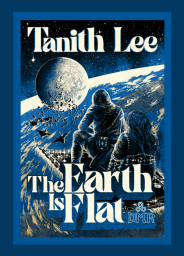 special collection: The Earth is Flat: Tales of the Flat Earth and Elsewhere by Tanith Lee. During the ‘70s and ‘80s, Lee published four novels and one collection of the Arabian Nights-inspired Flat Earth, one of her most highly regarded fantasy settings. In an interview over a decade ago, Lee announced new Flat Earth books were in the works: “On the Flat Earth, one of the proposed new books is a linked collection of (often long) short stories.
special collection: The Earth is Flat: Tales of the Flat Earth and Elsewhere by Tanith Lee. During the ‘70s and ‘80s, Lee published four novels and one collection of the Arabian Nights-inspired Flat Earth, one of her most highly regarded fantasy settings. In an interview over a decade ago, Lee announced new Flat Earth books were in the works: “On the Flat Earth, one of the proposed new books is a linked collection of (often long) short stories.
Authors (Isegoria): I recently watched American Oz, which “explores the life and times of author L. Frank Baum, the creator of one of the most beloved, enduring and classic American narratives”:
By 1900, when The Wonderful Wizard of Oz was published, Baum was 44 years old and had spent much of his life in restless pursuit of success.
Tolkien (Jacobin): J. R. R. Tolkien’s fantasy world is a medieval utopia with poverty and oppression airbrushed out of the picture. But Tolkien’s work also contains a romantic critique of industrial capitalism that is an important part of its vast popular appeal.
Blogs (DMR Books): Well, here is the traditional capstone/summary post for the 2023 DMR Guest Bloggerama. More than a week late but–hopefully–not a farthing short in regard to giving credit where credit is due. The Bloggerama officially ended with Jim Cornelius’ excellent ‘Rangers’ post on February 2. We try to finish things on January 31, but sometimes we have a pile-up of posts at the end and, thus, we extend things a bit. This year, things got off to a late start, which exacerbated the situation.
Science Fiction (Strange at Ecbatan): Starman’s Quest begins with an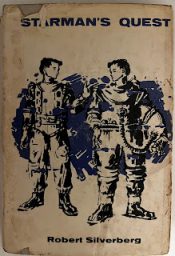 introductory fictional quote from an essay, discussing the Lexman Spacedrive, which allowed what Ursula Le Guin later dubbed NAFAL (“Nearly as fast as light”) travel between stars; and also mention one James Cavour’s failed attempt at a hyperdrive. Thus, in the year 3876, the settled worlds are linked by a fleet of starships, crewed by “Starmen”, who typically live their entire lives on ship. Due to the Fitzgerald Contraction — that is, more familiarly, time dilation — there lives extend for hundreds of years objective time, but only a normal span subjectively.
introductory fictional quote from an essay, discussing the Lexman Spacedrive, which allowed what Ursula Le Guin later dubbed NAFAL (“Nearly as fast as light”) travel between stars; and also mention one James Cavour’s failed attempt at a hyperdrive. Thus, in the year 3876, the settled worlds are linked by a fleet of starships, crewed by “Starmen”, who typically live their entire lives on ship. Due to the Fitzgerald Contraction — that is, more familiarly, time dilation — there lives extend for hundreds of years objective time, but only a normal span subjectively.
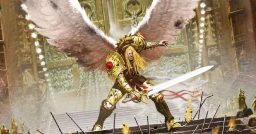 Review (Grim Dark Magazine): Echoes of Eternity is the penultimate edition in Black Library’s expansive Horus Heresy and Siege of Terra series that dig into the story of Warhammer 40k’s foundational mythos. From Horus Rising to Warhawk this has been an epic story of a great endeavour brought low, of high ideals betrayed and a family in desperate need of counselling. Now Aaron Dembski-Bowden gets his chance to add to the myth before handing off to Dan Abnett for the final instalments.
Review (Grim Dark Magazine): Echoes of Eternity is the penultimate edition in Black Library’s expansive Horus Heresy and Siege of Terra series that dig into the story of Warhammer 40k’s foundational mythos. From Horus Rising to Warhawk this has been an epic story of a great endeavour brought low, of high ideals betrayed and a family in desperate need of counselling. Now Aaron Dembski-Bowden gets his chance to add to the myth before handing off to Dan Abnett for the final instalments.
Science Fiction (Goodman Games): Farmer’s first novel, The Green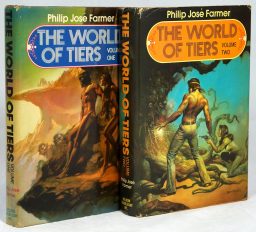 Odyssey, was published by Ballantine Books in 1957 and was the start of a prolific output of novels for Ballantine Books, Ace Paperbacks, and other publishing houses. He released 15 novels in the 1960s then topped that with another 23 in the 1970s! It was during this time that he crafted the World of Tiers series, which is specifically cited in Appendix N.
Odyssey, was published by Ballantine Books in 1957 and was the start of a prolific output of novels for Ballantine Books, Ace Paperbacks, and other publishing houses. He released 15 novels in the 1960s then topped that with another 23 in the 1970s! It was during this time that he crafted the World of Tiers series, which is specifically cited in Appendix N.
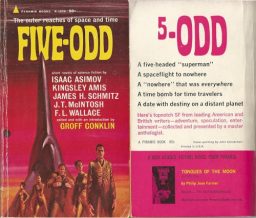 Science Fiction (M Porcius): That volume features an ad for another Pyramid paperback, Five-Odd, a 1964 anthology of SF stories that appeared in SF magazines in the period 1954-1961. Under the roll call of these six savants on the front cover is an illustration of five spacers: a fat dude, a fit dude, and three trim dudettes. (The fat guy must have aced his SATs or something.)
Science Fiction (M Porcius): That volume features an ad for another Pyramid paperback, Five-Odd, a 1964 anthology of SF stories that appeared in SF magazines in the period 1954-1961. Under the roll call of these six savants on the front cover is an illustration of five spacers: a fat dude, a fit dude, and three trim dudettes. (The fat guy must have aced his SATs or something.)
Science Fiction (Tor): The science fiction world was robbed of a major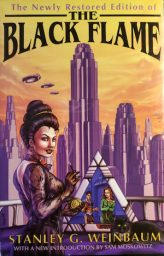 talent when early star Stanley G. Weinbaum died from cancer at the age of only 33. His stories had taken the magazines by storm, and writers like Isaac Asimov and Arthur C. Clarke were quick to sing his praises. One of his rare longer works, The Black Flame, did not appear until after his death, and even then, in a significantly revised form.
talent when early star Stanley G. Weinbaum died from cancer at the age of only 33. His stories had taken the magazines by storm, and writers like Isaac Asimov and Arthur C. Clarke were quick to sing his praises. One of his rare longer works, The Black Flame, did not appear until after his death, and even then, in a significantly revised form.
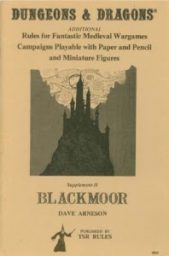 D&D (Grognardia): I was familiar with the land of Blackmoor as it was briefly described in the World of Greyhawk. However, that was close to the extent of my knowledge, this being several years before the publication of the DA-series of D&D modules that began with Adventures in Blackmoor. Consequently, I was very excited to read this weird, little, brown book and see what secrets it might reveal.
D&D (Grognardia): I was familiar with the land of Blackmoor as it was briefly described in the World of Greyhawk. However, that was close to the extent of my knowledge, this being several years before the publication of the DA-series of D&D modules that began with Adventures in Blackmoor. Consequently, I was very excited to read this weird, little, brown book and see what secrets it might reveal.
Horror (M Porcius): Here at MPorcius Fiction Log we are reading Robert Bloch’s 1961 collection Blood Runs Cold, which Anthony Boucher, important writer and editor of SF and detective fiction called “Outstanding” in The New York Times–that’s the paper of record, so you know it has got to be true! I own the 1963 Popular Library paperback with a green photographic cover and a goofy joke biography of Bloch facing the title page.
Bloch’s 1961 collection Blood Runs Cold, which Anthony Boucher, important writer and editor of SF and detective fiction called “Outstanding” in The New York Times–that’s the paper of record, so you know it has got to be true! I own the 1963 Popular Library paperback with a green photographic cover and a goofy joke biography of Bloch facing the title page.
 Cinema (Neotext Corp): French secret agent called Josselin Beaumont was sent to assassinate an African dictator, but as he set out on the mission, the political circumstances shifted and, since there was no need for the dictator to be removed anymore, he was sold out by the government. After Beaumont succeeds at escaping from the harsh prison, he goes back to Paris not only to fulfill his original mission of killing the dictator, but also to exact swift revenge on the people who stabbed him in the back.
Cinema (Neotext Corp): French secret agent called Josselin Beaumont was sent to assassinate an African dictator, but as he set out on the mission, the political circumstances shifted and, since there was no need for the dictator to be removed anymore, he was sold out by the government. After Beaumont succeeds at escaping from the harsh prison, he goes back to Paris not only to fulfill his original mission of killing the dictator, but also to exact swift revenge on the people who stabbed him in the back.
Cinema (Apocalypse Later): I’ve seen Fast Times at Ridgemont High before,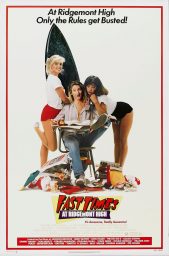 but not as often as you might expect because I’m British. This wasn’t the pivotal cinematic representation of my youth the way it was so many of my American friends. Initially, it feels like it wants to do the same thing as The Best of Times but in our reality. It’s another film with a young ensemble cast who are coming of age, the token adult this time being Ray Walston.
but not as often as you might expect because I’m British. This wasn’t the pivotal cinematic representation of my youth the way it was so many of my American friends. Initially, it feels like it wants to do the same thing as The Best of Times but in our reality. It’s another film with a young ensemble cast who are coming of age, the token adult this time being Ray Walston.
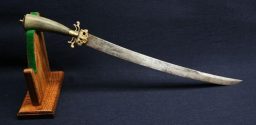 Blades (Frontier Partisans): The espada ancha or “wide sword” is a form characteristic of and unique to the northern frontiers of New Spain; that is, what is now northern Mexico and the southwestern United States. Brinckerhoff and Chamberlain (1972, p. 74 – 75) postulate that these swords evolved in the early 18th Century from 17th Century Spanish style civilian or hunting broadswords whose 76 to 92 cm.
Blades (Frontier Partisans): The espada ancha or “wide sword” is a form characteristic of and unique to the northern frontiers of New Spain; that is, what is now northern Mexico and the southwestern United States. Brinckerhoff and Chamberlain (1972, p. 74 – 75) postulate that these swords evolved in the early 18th Century from 17th Century Spanish style civilian or hunting broadswords whose 76 to 92 cm.
Howard, Tolkien, Lee, L’Amour – and a Spillane bio that’s next on my reading list. Love it!
What a great set of links!